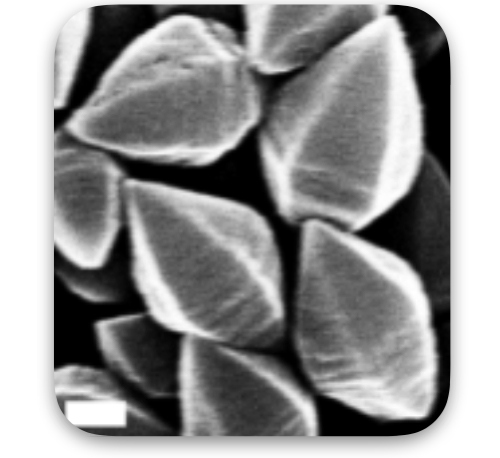By transmitting viruses, bacteria and parasites responsible for diseases such as malaria, dengue fever and chikungunya, the mosquito remains the organism most harmful to human health. To reduce mosquito populations, most countries use chemical insecticides but these elicit resistance and are toxic to a variety of beneficial animals, including bees, crustaceans and fish. A burning question is therefore; how can we control mosquito populations without impacting the environment or inducing resistance?
This is where
Bacillus thuringiensis (often abbreviated to Bt), a species of bacteria used for its insecticidal properties, comes in. A variety of Bt strains exists, each targeting a specific insect species or subset of species. Notably,
Bacillus thuringiensis israelensis (Bti) produces four highly specific and potent toxins in the form of nanocrystals, which upon ingestion by mosquito larvae will dissolve in their gut, oligomerize upon proteolytic activation by digestive enzymes and perforate intestinal cell membranes, leading to larvae death. The exact mechanisms by which toxin crystals form in
Bti and dissolve in the mosquito both remain elusive. Likewise, the exact mechanism by which one of these toxin, Cyt1Aa, exerts its toxicity is unclear. This toxin is of crucial interest being the key element explaining the absence of resistance in the field.
Researchers at our institute, leading a consortium of 11 laboratories, combined several approaches of structural biology, molecular biology, biochemistry, biophysics and toxicology to elucidate the activation cascade of Cyt1Aa, from its crystallization within the bacterium to its toxic activity in the insect.
By providing a detailed understanding of the mechanisms underlying the natural crystallization of Cyt1Aa and its fate in the digestive tract of mosquitoes, this work paves the way for a rational adaptation of the properties of this natural toxin to human needs –
e.g. by extending its spectrum of action, increasing its toxicity and reducing production costs. Such advancements would allow a widespread use of this environmentally-safe mosquito killer.

Submicron-sized crystals of Cyt1Aa were grown
in vivo by recombinant expression in Bti, and their quality was evaluated by scanning electron microscopy (scale = 200 nm) before they were used for structure determination using Serial Femtosecond Crystallography at a X-ray Free electron Laser (XFEL).